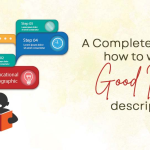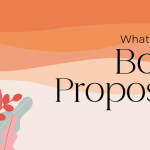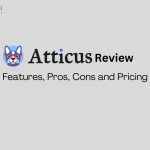What is an 'Em Dash’?
The Em Dash is a versatile punctuation mark that can be used to emphasize material, set it off, or denote a pause or break in a sentence. An Em Dash is a lengthier punctuation mark that is used for a variety of purposes, as opposed to a hyphen, which is a shorter punctuation mark used to connect words.
When deciding how to use an Em Dash in a sentence, think about the overall tone and effect you want to achieve. While it can be a great tool for emphasis and clarity, using it excessively can reduce the overall impact of your work. The Em Dash, like any other punctuation mark, should be used with care and intention.
History of Em Dash
The roots of the Em Dash can be traced back to ancient Greece, where it was used to mark a pause in a sentence instead of a colon or a comma. This versatile punctuation mark was eventually embraced by other languages and writing systems, including Latin and early European manuscripts.
In modern typography, the Em Dash is believed to have originated in the 15th century as a replacement for other forms of punctuation, such as commas, colons, or parentheses. It was often represented by a horizontal line as wide as the letter “M,” hence the name “Em” Dash.
Read: What is Amazon Kindle Publishing? A to Z about Kindle Direct Publishing.
During the 18th and 19th centuries, the Em Dash gained popularity in English literature and became a preferred punctuation mark among literary giants such as Emily Dickinson, Henry James, and Virginia Woolf. These writers often employed it to convey a sudden shift in thought, create dramatic pauses, or set off parenthetical phrases.
In the 20th century, the Em Dash was further standardized in various style guides, such as The Chicago Manual of Style and The Associated Press Stylebook. Today, the Em Dash remains a ubiquitous and flexible punctuation mark in English writing, especially in creative writing, journalism, and digital content. Whether used to add emphasis, indicate interruption, or simply create a pause, the Em Dash has proven to be an indispensable tool for writers across the centuries.
How to use ‘Em Dash’?
The Em Dash is a versatile punctuation mark with a range of uses in the English language. Here are some common ways in which Em Dashes can be used in writing:
- Indicate a pause or a break in a sentence
One of the most common uses of the Em Dash is to indicate a pause or a break in a sentence. This can be used to create a sense of drama or emphasis in the writing. For example: “She looked out the window and saw the most beautiful sight— a rainbow stretching across the sky.” - Set off a phrase or clause for emphasis
Another common use of the Em Dash is to set off a phrase or clause that adds additional information or emphasis to the sentence. This can be used to draw attention to a key point or to add emphasis to a particular aspect of the sentence. For example: “The concert was amazing— all the performers gave their best performances.” - Replace commas, colons, or parentheses
The Em Dash can also be used to replace commas, colons, or parentheses in a sentence. This can be used to create a more emphatic or dramatic effect in the writing. For example: “I couldn’t believe what I saw— a giant, purple elephant walking down the street.” - Separate two clauses that are closely related
The Em Dash can also be used to separate two clauses that are closely related in a sentence. This can be used to create a sense of continuity or flow in the writing. For example: “She had always dreamed of traveling the world— visiting exotic locations, meeting new people, and experiencing different cultures.” - Set off a list
The Em Dash can also be used to set off a list of items in a sentence. This can be used to create a sense of clarity or to emphasize the items in the list. For example: “She bought everything she needed for the party— balloons, streamers, cake, and ice cream.”
How not to use ‘Em Dash’?
While the Em Dash can be a useful punctuation mark, there are some common mistakes that writers should avoid when using it:
- Overusing it: The Em Dash should be used sparingly and only when necessary. Using it too frequently can make writing appear cluttered and over-emphatic.
- Confusing it with hyphens or en dashes: The Em Dash is longer than a hyphen and should not be used to connect words or parts of words. It is also longer than an en dash, which is used to indicate a range of numbers or dates.
- Not using spaces: There should be no spaces before or after an Em Dash when used in running text. However, when used to set off a block of text or a list, there should be a space before and after the Em Dash.
- Using it incorrectly in dialogue: In dialogue, an Em Dash should only be used to indicate a sudden break or interruption. If it is used to indicate a trailing off or hesitation, it should be replaced with an ellipsis.
- Forgetting to close the Em Dash: It is important to use a second Em Dash to close a phrase or sentence that is set off by an Em Dash. Failure to do so can create confusion for the reader.
Difference between Em and En Dash
The en dash and em dash are two forms of punctuation dashes. While they may appear to be the same, they serve various purposes and have varied lengths.
The en dash is a shorter version of the em dash and is usually the width of the lowercase letter “n.” It is used to denote a set of values or a link between two nouns. For instance, “the years 1990-2000” or “the New York-London flight.” In some circumstances, the en dash is used in place of “to” or “through.”
Read: What is Hybrid Publishing? Is Hybrid Publishing really worth it?
The em dash, on the other hand, is longer than the en dash and is usually the width of the lowercase letter “m.” It is used to mark a stop, break, or interruption in a sentence, as well as to start a phrase or clause. “She went to Paris—the city of love—for her honeymoon,” for example, or “I finally realized what the problem was—he was always interrupting me.” In these instances, the em dash is used to emphasize or dramatize the statement.
The en dash is shorter and more horizontal in appearance, whereas the em dash is longer and more vertical. To connect compound adjectives such as “blue-eyed” or “high-quality,” the en dash is frequently used instead of a hyphen.
Finally, the Em Dash is a multipurpose and dynamic punctuation mark that may add emphasis, clarity, and drama to your text. Understanding when and how to utilize it correctly can help enhance your writing and successfully communicate your message. However, it is critical to avoid typical blunders and to use the Em Dash sparingly so as not to distract or confuse your readers. You may master the skill of using the Em Dash and improve your writing style by following the standards and best practices described in this article.
















